Hello from 10,000 feet altitude in Jebal Akhdar, Oman. Much cooler up here – a mere 83 degrees – than the 105 (feels like 115) that we experienced yesterday in the Wahiba Sands desert.
One consistency about our “Around the World in 86 days” trip is that each day seems to whiz by in a flash of impressions and experiences. There is so little down time. I’ve missed writing to you about Greece and Qatar (both of which were high points), so I will have to get back to those. But for today, I want to tell you about Oman. And to shake things up, we’ll have a little Q&A.
Q. Why the heck would anyone want to go to Oman?
A. Yes, it’s a reasonable question. Several answers here. First, when it comes to travel, I can be a smidge selfish; I don’t like sharing with hoards of tourists. This is not a problem in Oman. Second, Omani culture fascinates me. Their hospitality is legendary. There is great diversity in nature from sandy beaches (home to nesting sea turtles), red sand deserts, and wadis and oases which provide a bright green contrast to the expanse of arid mountains. The food scene is delicious. The hairy goats are adorable, the camels surreal.
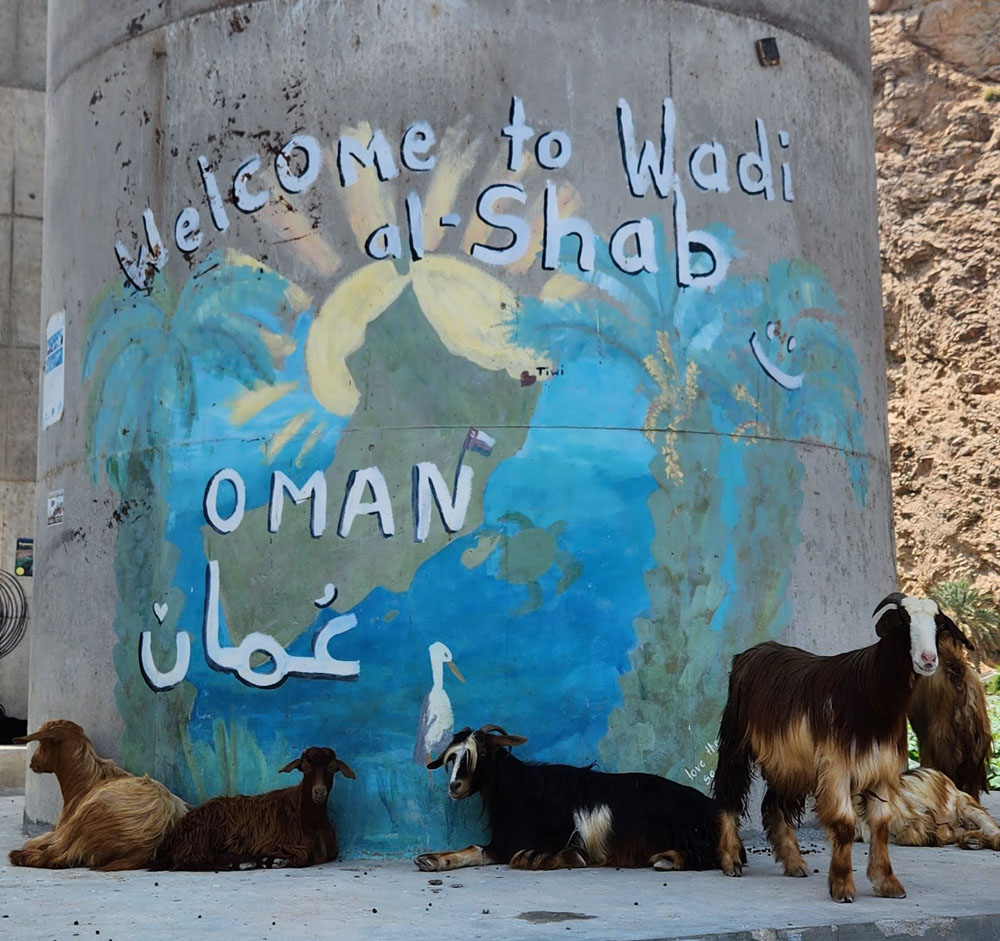
And it’s clean and safe – there is zero tolerance for crime or alcoholism and the water is potable. People are kind and helpful and tolerant despite being different from me. And this is a key reason why I love to travel – getting to learn about my fellow humans whom I may not otherwise understand or appreciate.
Q. Ok, sounds interesting enough for me to keep reading. I don’t want to show my ignorance, but where is this country exactly?
A. Oman sits just atop Yemen and beneath the United Arab Emirates. It borders Saudi Arabia to the west. The north coast is on the Gulf of Oman while the remainder of the country lies on the Arabian Sea. The capital is Muscat which has a population of 1.7 million inhabitants.
Q. What was your biggest surprise?
A. I was not expecting the large population of expats, especially Indians. Many businesses have Indian management, the Muscat souk seemed entirely Indian-run and restaurants were often Indian-owned serving Indian food. Oman has close to 45% non-native Omanis living in the country.
Also the way the signs above each store look and are translated can often be hilarious. Unfortunately I have not been able to capture the funniest of these (like the one that advertised “Retails of Pets and Their Accessories”), but I’ll give you a pictorial idea of how they look here below.
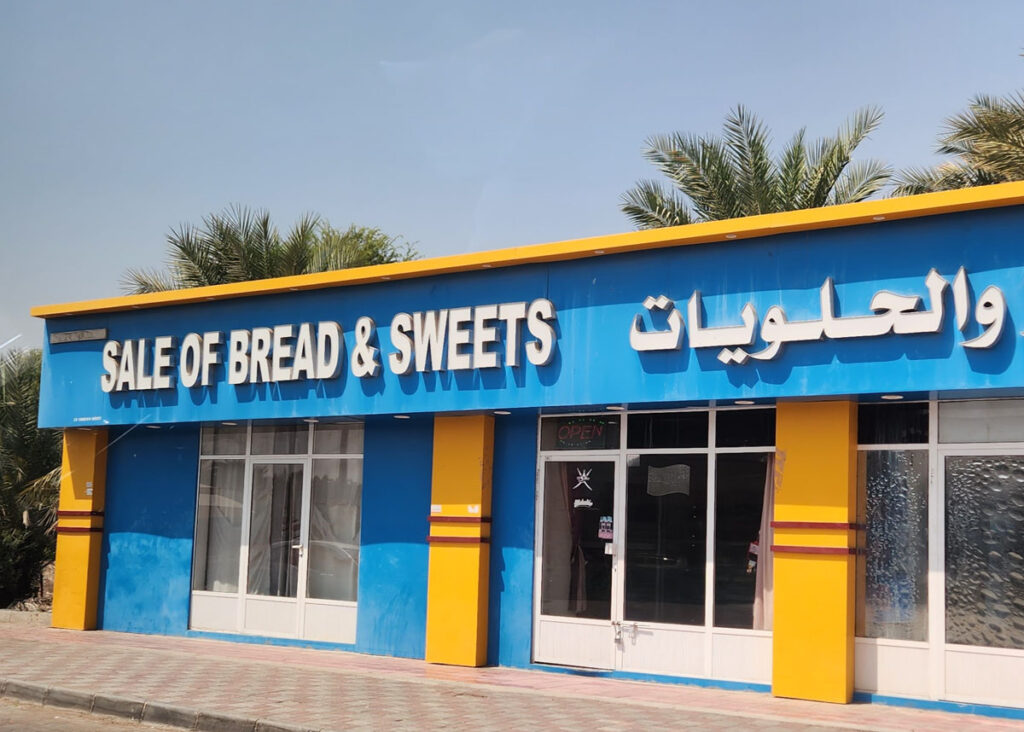
Q. What were some of your highlights?
A. Well hands down (er, I mean hooves down), the camel-riding on my birthday in Wahiba Sands desert. It’s not as easy as it looks to descend from a camel – and the camel gets to choose whether it feels like squatting back down or not! The key is to hold on very tight, use your core, and expect a sudden lurching downward.
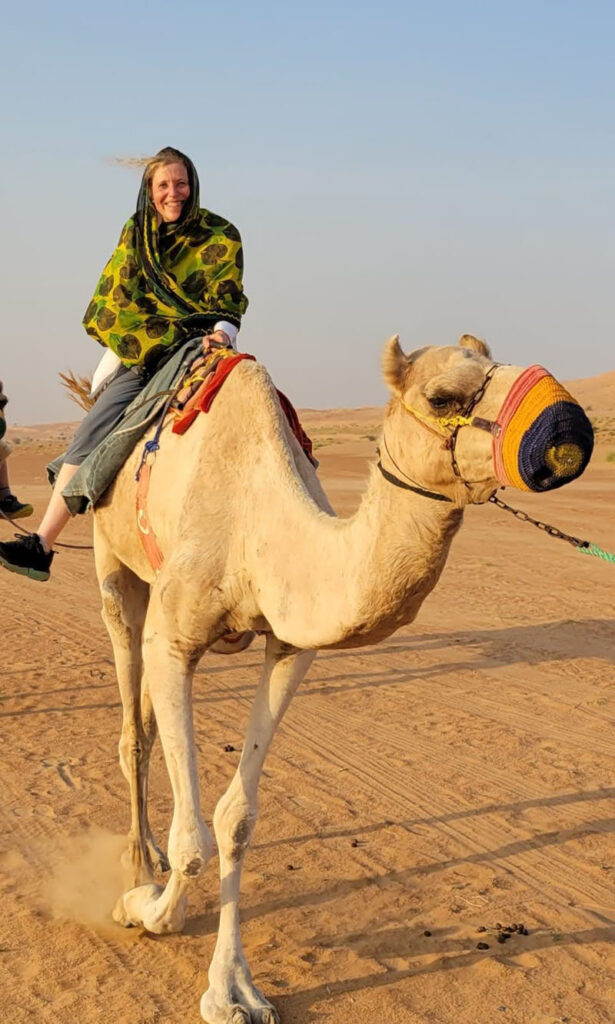
Watching the sun set over the wide expanse of desert with my feet in the hot, red sand was exhilarating.
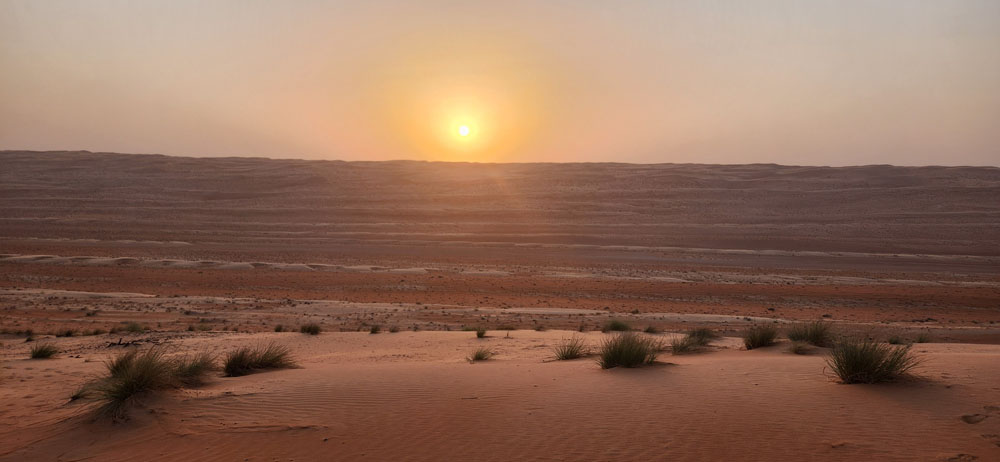
Another highlight was making eye contact with veiled women shopping in the Women’s Souk in Sur and sharing (hidden) smiles.
Surviving a hike in the sweltering, humid 105 degrees to discover impossibly green waters at Wadi Shab.
An unexpected Omani-style birthday dinner served to us while seated on colorful woven cushions under the star-filled expanse of desert sky.
And because I’m a foodie, shopping (and tasting) in the souk in Nizwa. There were at least 20 varieties of dates (fresh and dried) to sample plus homemade sweets and spices. Heaven!
We had dinner one night with an Omani family in their home. What a fascinating experience that was. A generous and varied meal was served on a plastic tablecloth on the floor – the custom is to eat with one’s (right) hand. Afterwards all the unwanted bits get rolled up in the tablecloth and the whole thing gets thrown away! We were gifted a beautiful painting created on canvas by one of the three children, a 9 year old girl.
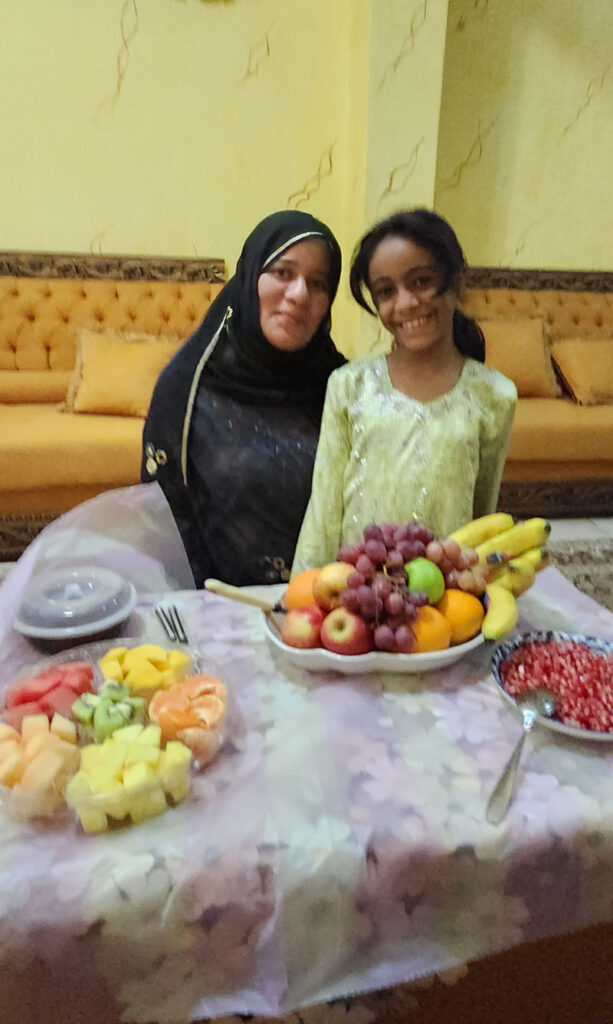
Q. What have you been eating?
A. Specialties including Omani coffee known as qahwa which typically includes rose water, cardamon and cloves. Omani tradition is to offer this coffee with a big bowl of dates alongside. Tea is known as Karak. It’s quite sweet (and very tasty!) and similar to Indian chai in that it contains cardamom, clove, cinnamon, and ginger and some sweetened condensed milk.
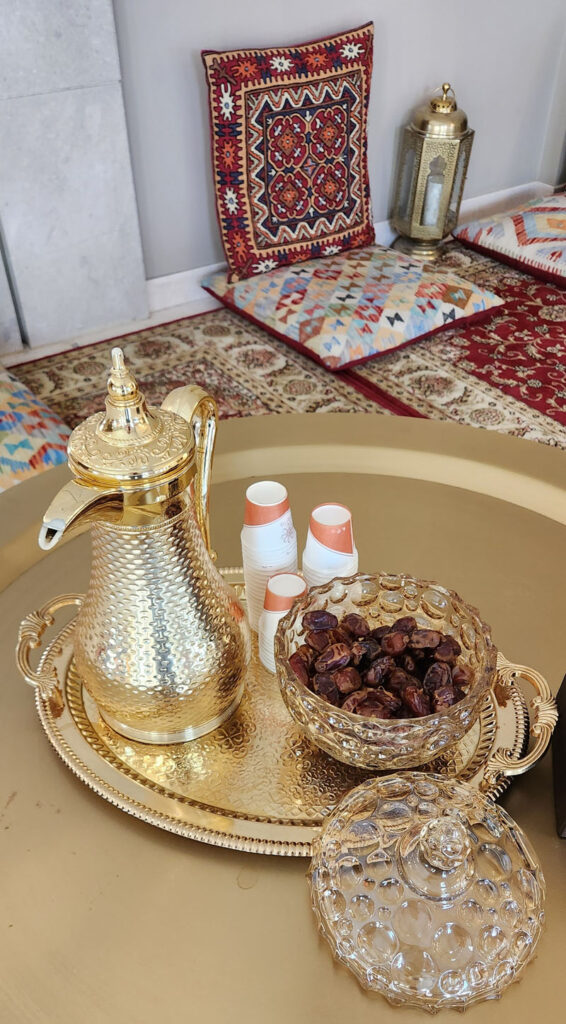
Another sweet specialty is Halweh which is a gel-textured dessert made of sugar or honey, rose water, semolina, nuts, and butter. In Nizwa, I sampled Halweh made from camel’s milk. Yum!
I have eaten a lot of Middle Eastern dips like hummus, baba ghanoush, labneh, and ful (broad or fava bean stew). Chicken and lamb are prominent. We are currently in the middle of harvest season in Pomegranate Country so that’s been a treat. Dates are a staple. Watermelon juice every morning with breakfast.
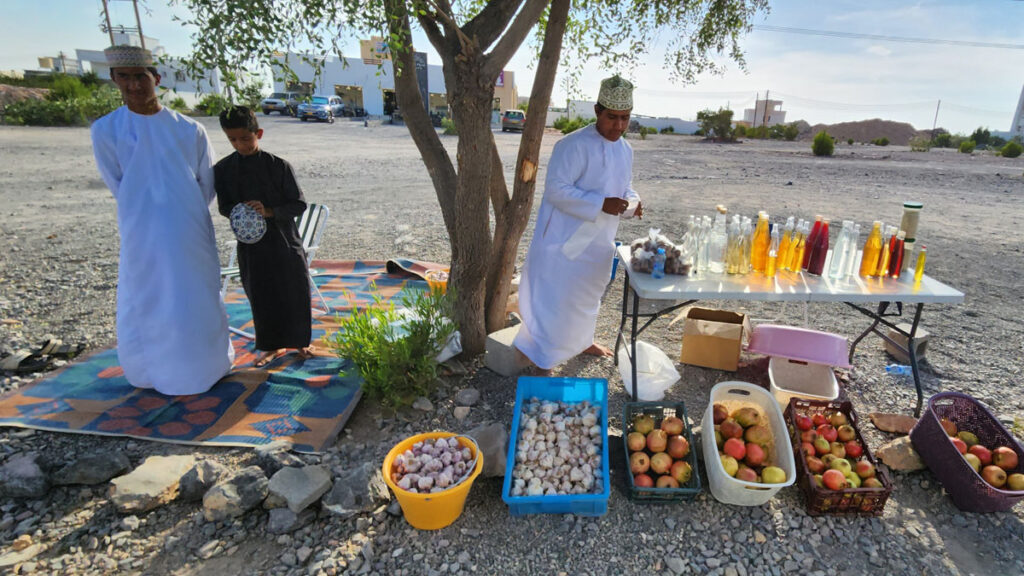
Q. What were some of the challenges in this part of the world?
A. Two come to mind. The first is that to be respectful, both men and women must cover shoulders and knees in many places. We knew this going in and it wasn’t a problem for us. But it’s hot. Very hot. Long pants and long sleeves don’t seem so desirable. After a day or two, we realized it’s actually the wise choice given the blazing sun. But it sure felt good to get into the AC and revel in a cold shower after a long day.
The other has to do with the bathroom situation. Full disclosure, there are places where it’s not all marble and modern conveniences. That said, I’ve been in far worse situations elsewhere. Oman is very clean compared to most other places. Our guide did an amazing job steering us to the best spots, but sometimes places were still a bit, er, “rustic.” Meaning it might have been preferable to use Mother Nature, but that is not done in Oman!
Q. Did you find any good souvenirs?
A. Given the length of this trip, we have been very careful not to acquire too much. But that changed in Oman, partially because we’re on the back end of our travel but also given how exotic it is here. Oman cultivates nearly all of the world’s frankincense, so we had to get some of that as well as a small hand-painted clay incense burner in Omani colors of red, green, and white. The Omanis actually use incense in a myriad of ways – to discourage insects and they also place it on the floor/under their robes to waft up and infuse a perfumed scent (remember- it is very, very hot in Oman!). Rose water and oud perfume. Dates and olive oil. Saffron and Omani coffee. Bedouin handicrafts.
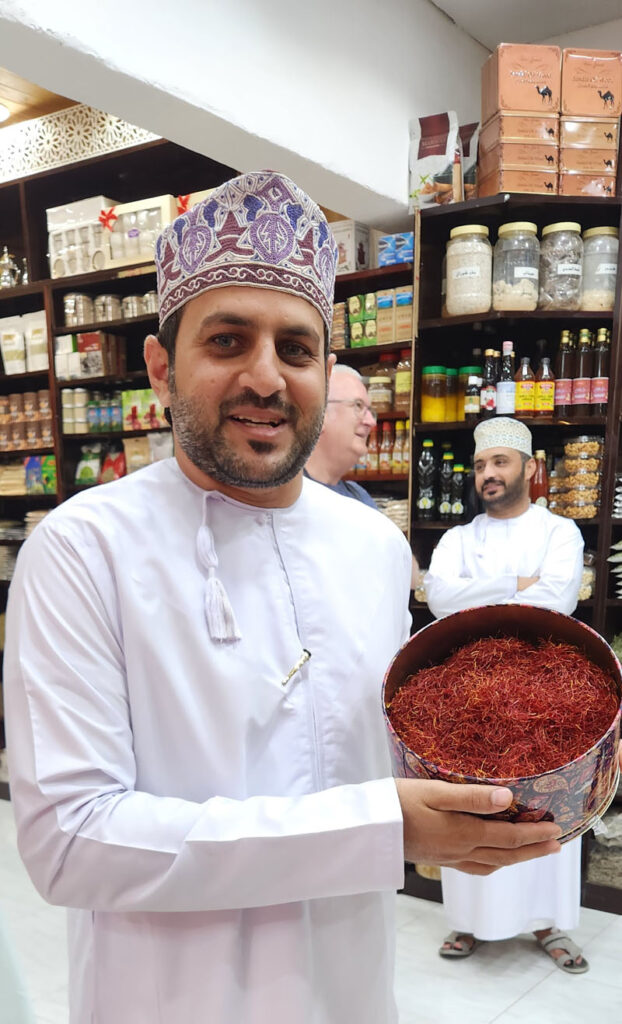
(Speaking of which, one of the funniest memories occurred when our guide Nawaf pointed out a modern hospital and with great pride, told us about how this was a hospital for the handicraft people. 😊)
Q. What are three things that you will remember about Oman that made an impression on you?
A. The doors and gates. Even the poorest of areas have homes with ornate ones. Whether wooden or metal, they are intricate and reflect the pride in entering one’s abode.
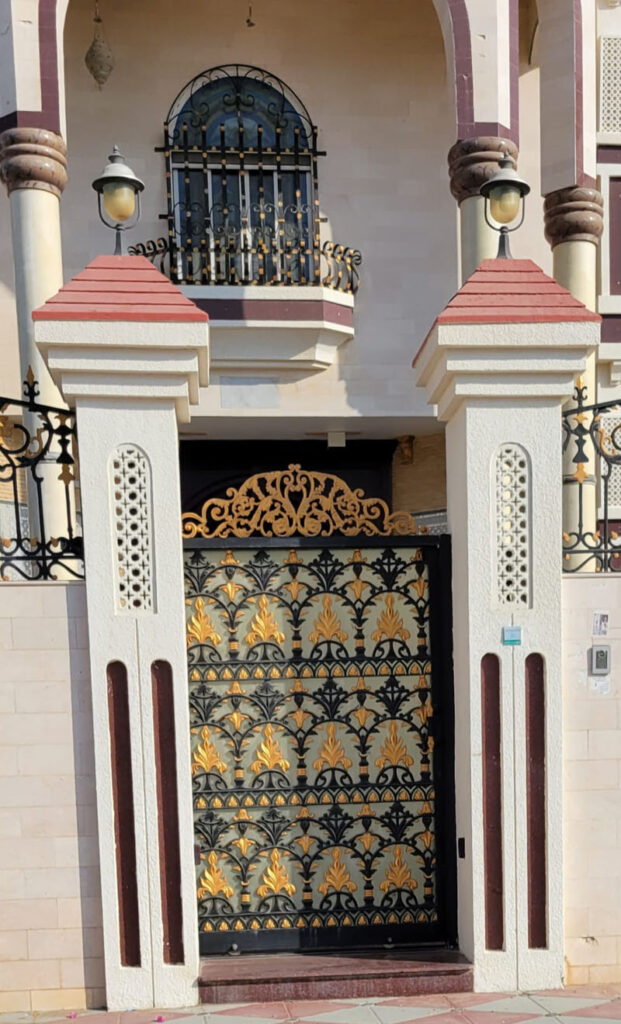
The men’s headpieces called Kuma. They are intricately woven in soft colors and more like a skullcap than the headpieces worn elsewhere in this part of the world.
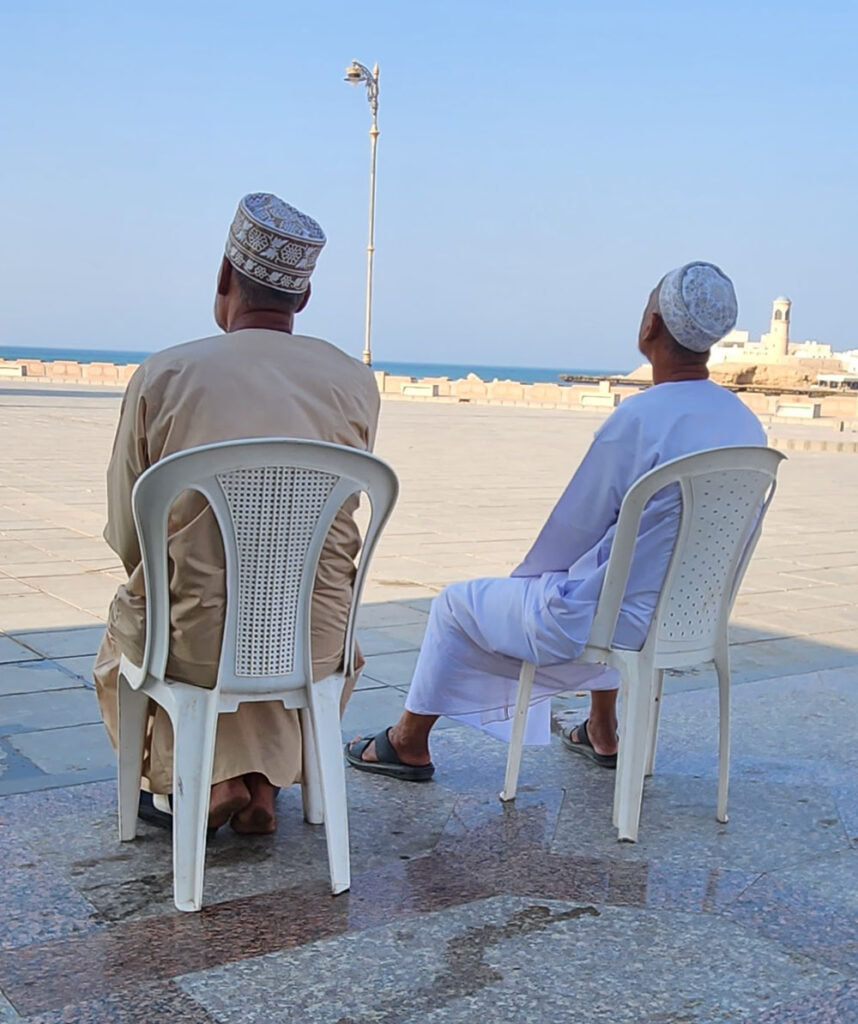
The juxtaposition of dry desert, rocky mountains, and bright green oases which generate an abundance of fruits, vegetables, roses, and palm trees.
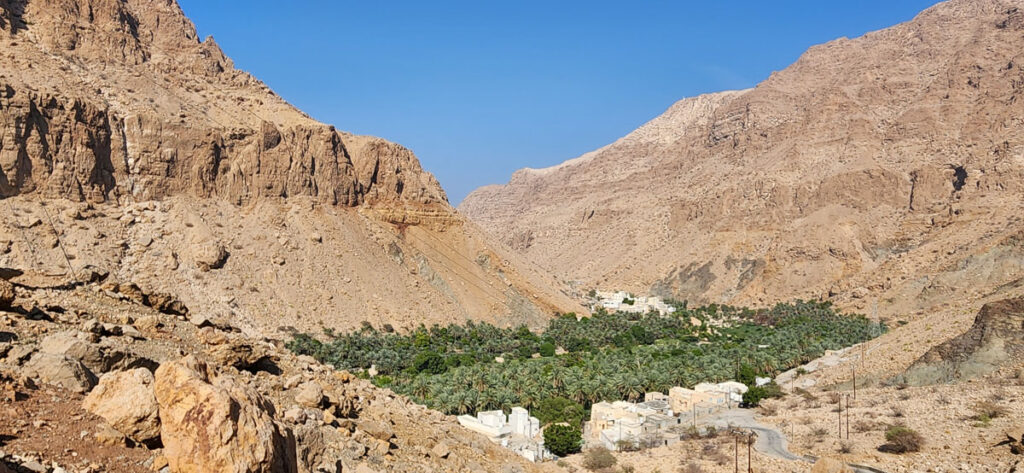
Ancient irrigation systems, called Aflaj, can be traced back to 2500 BC! They are still used widely today and are recognized as Unesco World Heritage sites.
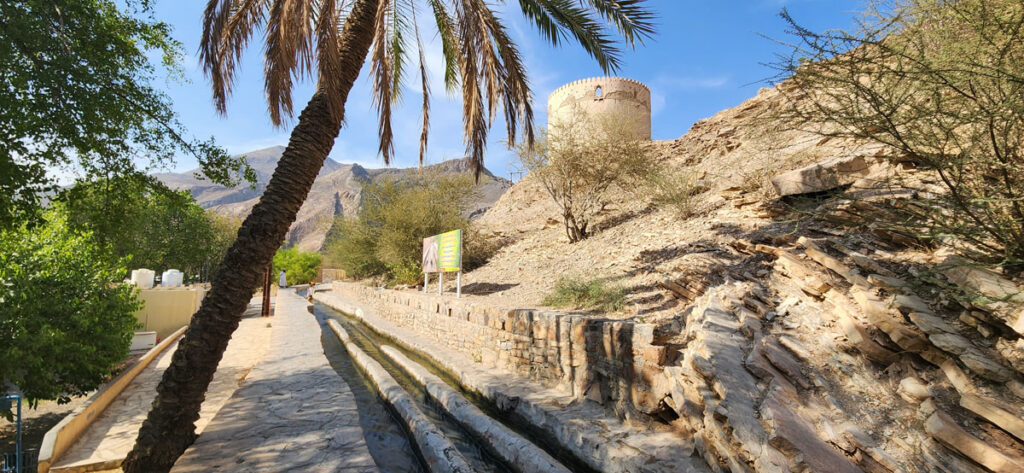
Oh Man, are we glad we added Oman to our itinerary. It just may become the next Croatia before too long!
PS – as I go to publish this post, war has broken out in the Middle East. I’m deep in trying to process it all. Grateful for the experiences I had, the warm and hospitable people I met and cognizant of the fact that at our core, most of us are more alike than different.

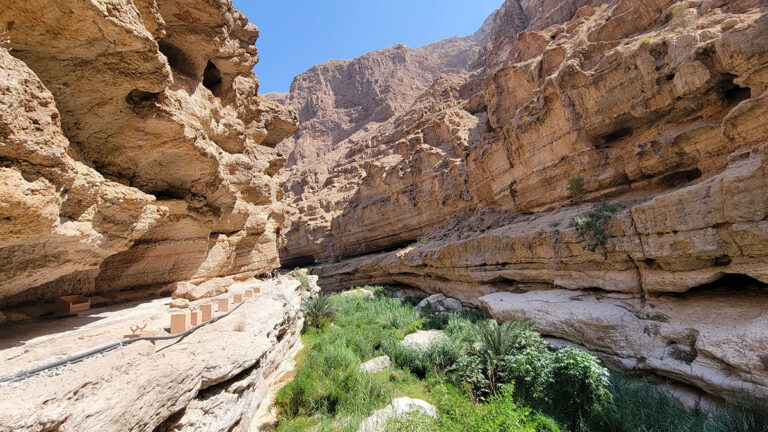
12 Comments
Thank you for taking me along on your world travels through your posts. Through your eyes and words, dear friend, I get to experience and learn about places that I will likely never visit in-person.
I must confess that I have gotten way behind on my email, and I’ve been saving the Red Clog Blog posts to read on a quiet day. Finally, today is that day. I started with most recent and will be working backwards, so I’m sure you’ll hear from me again.
Safe and happy travels to you and Bruce. Enjoy your adventures together!! XOXOXO
Aww, thanks Roz! Hope you had a great quiet day and enjoy the other posts!
Dear Girl thank you for another adventure.
Margaretta, thanks for coming along for the ride!
Great! I hope my envy is at least an attractive Green. As always, thanks for my visual vacation.
Love
Thanks Marty!!
wow!! did I have fun visiting Oman thru ur blog!!
a treat for all the senses.thank u !!
Reading your words about Oman, it does sound like a fascinating place to visit. I wonder if there is a time of year when it is not so hot and humid? Thanks for sharing your photos, your impressions of the people and their culture and of course, their food! Hearing about the war here in CA is horrifying. It must be so much more so for you to be in that same region. Glad you are seeing and doing so much!
Fascinating Alysa!! I’m curious how many tourists visit Oman? Really enjoyed reading your accounts. Safe travels for the remainder of your trip!!
Thanks for your note. Not too many American tourists visit but there were a LOT of Swiss! And a handful of other Europeans countries, mostly French and German. Sorry to miss you while you are in our hood…look forward to the next visit!
Love learning about this country and thinking I’ll add it to my bucket list. Best wishes on the rest of your travels. S
Thanks for your note! Hope all is well!